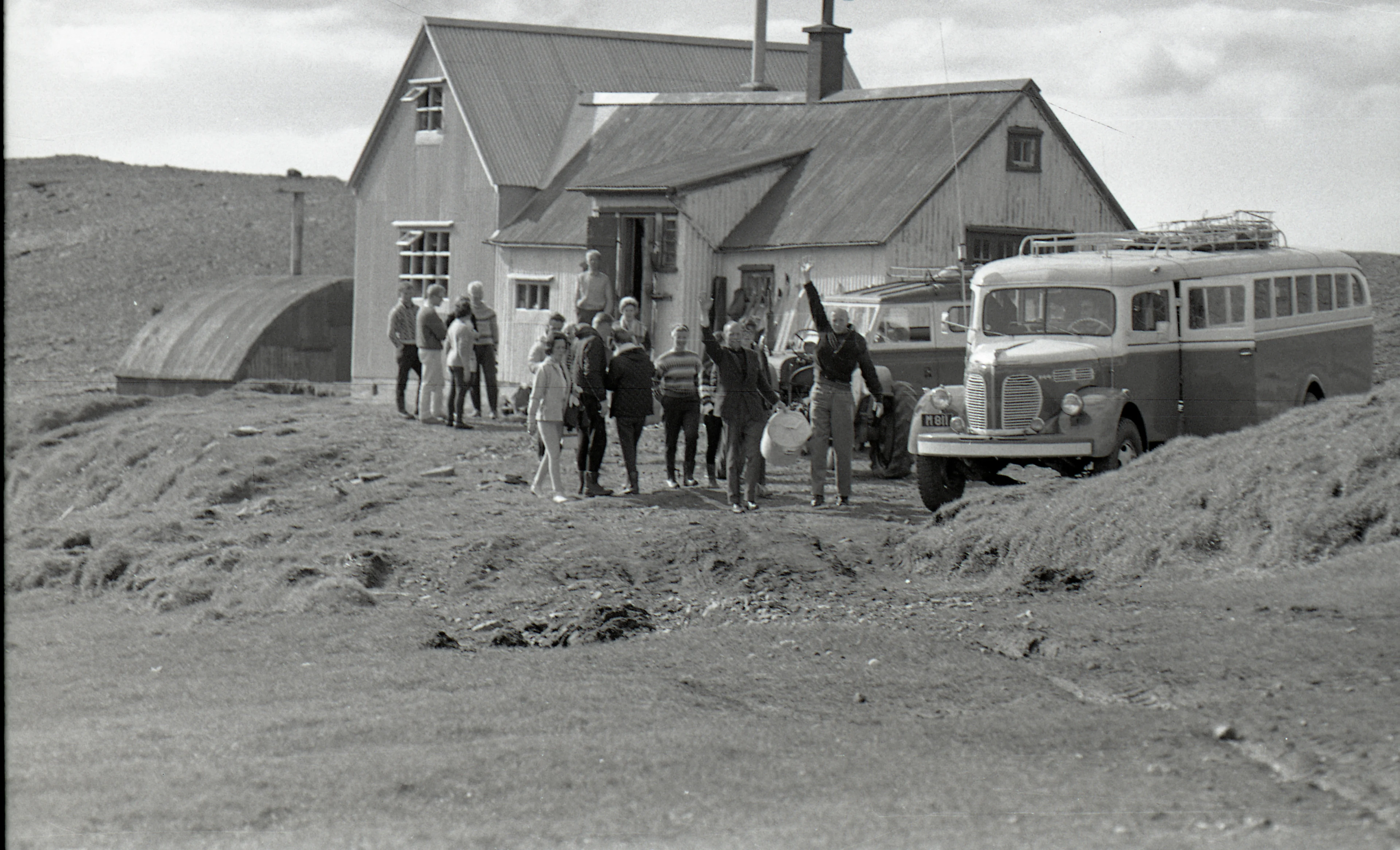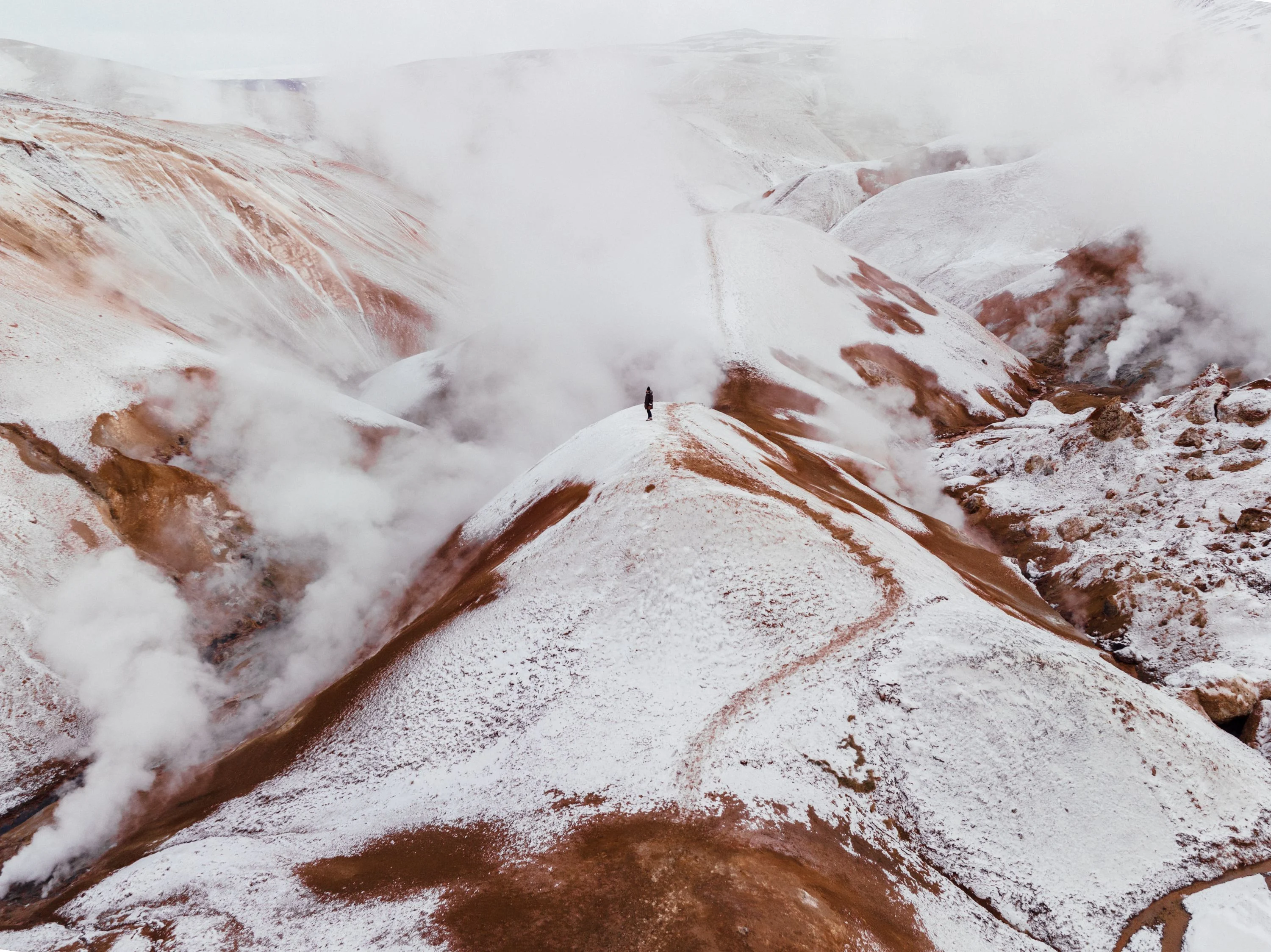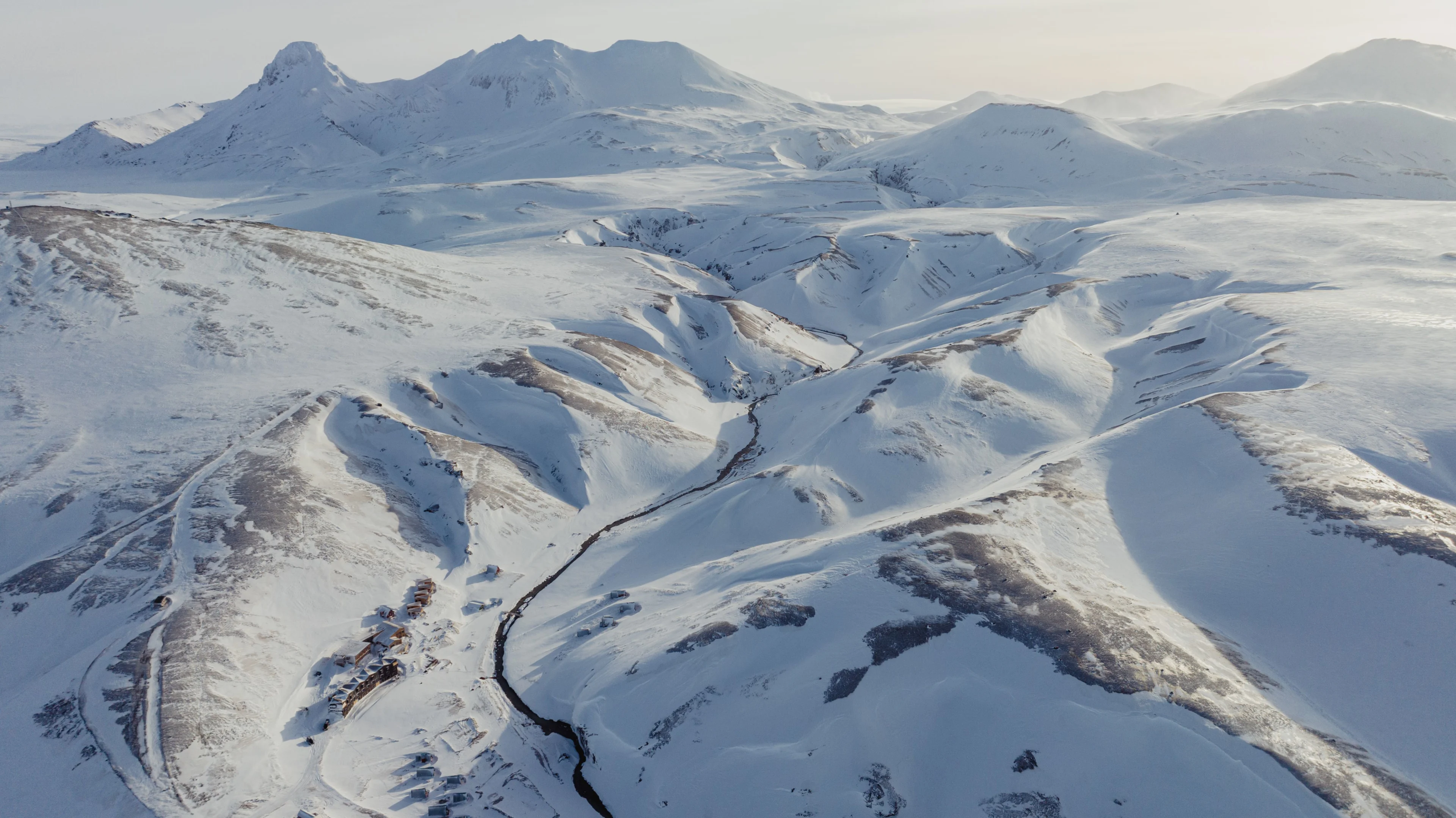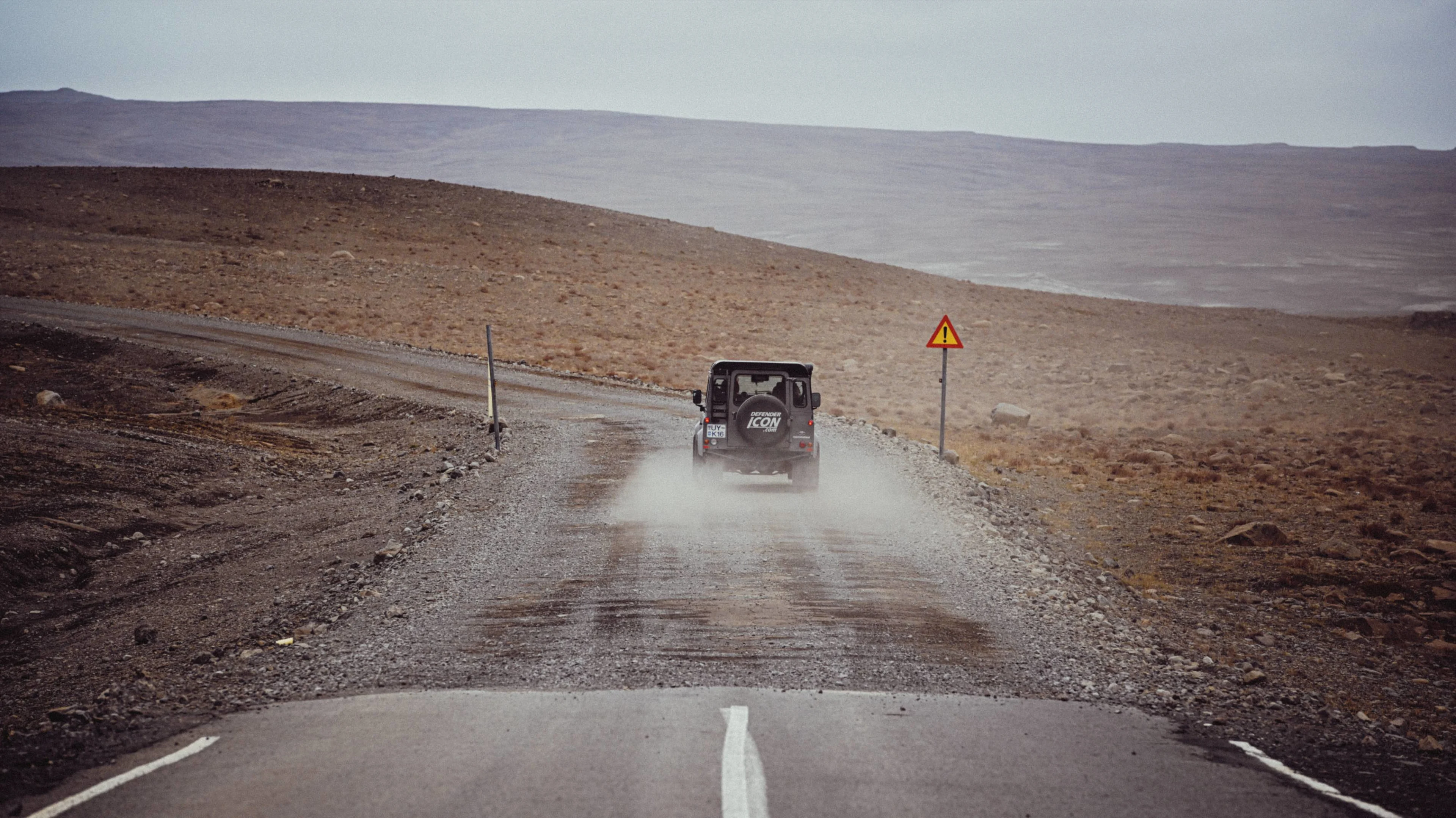Spanning 150 square kilometers, Kerlingarfjöll is a circular mountain range with peaks reaching to 1500 meters. From these towering heights, you can see breathtaking vistas of the highlands, punctuated by the stunning Hofsjökull and Langjökull glaciers. This dramatic landscape of Iceland promises daring hikers some truly inspiring views.
Historical overview
Kerlingarfjöll’s history, as rugged and enduring as the mountains themselves, is one of curiosity, tragedy, adventure, and revival.
In late October 1780, a dangerous journey taken by two brothers, Bjarni and Einar Halldórsson, from Reynistaður, ended tragically, with harsh winter conditions claiming their lives. This event placed a shroud of fear and mystery over the region, stopping travels across Kjalvegur and maintenance of the stonemen markers—stone cairns constructed to guide travelers—for over 100 years.
This cycle changed in 1888 when a new spirit of adventure arose, led by explorer Þorvaldur Thoroddsen and his team. Their expeditions reopened Kjalvegur to explorers, starting an era of travel marked by improvements in the routes used and a growing public interest. This enthusiasm sparked the establishment of Ferðafélag Íslands (Icelandic Touring Association) and the construction of suitable structures in Kerlingarfjöll.
In the 1930s, Guðmundur Einarsson, a pioneering naturalist and entrepreneur, began mountaineering classes in Kerlingarfjöll. Inspired by his efforts, the Icelandic Touring Association started organizing hiking tours of the area. They built a cabin in 1937 to accommodate these activities.

In 1961, Kerlingarfjöll ushered in the era of summer skiing, turning the area into a top vacation destination. The summer months, with their milder weather, became the prime season for skiing, offering an ideal balance of pleasant temperatures and ample snow on the slopes. To accommodate the influx of enthusiasts, ski lifts were set up, and the existing cabin accommodations were enhanced to include dormitory and dining areas for ski students. Every year, from June to August, thousands of young Icelanders honed their skiing skills at Kerlingarfjöll's seasonal ski school.
As the new millennium dawned, the ski school had to close operations due to receding snowfields. This led to a shift towards outdoor adventure development, creating trails, bridges, and signs to enhance the mountain range's accessibility and safety. Concurrently, the aging accommodations underwent renovations and expansions, becoming the Kerlingarfjöll Mountain Resort.
The resort functioned as a base camp for hikers and adventurers until 2020, providing a hotel, cabins, campgrounds, and a restaurant. In 2023, the resort was replaced by Highland Base - Kerlingarfjöll. Conceived as a welcoming oasis for both the simple traveler and the lavish explorer, this game-changing outpost expands the horizons of hospitality in the highlands, encompassing private lodges, a hotel, a hostel, huts, a campsite, an 80-seat restaurant, a lounge, and geothermal baths.

Geology of Kerlingarfjöll
Kerlingarfjöll was formed over 300,000 years ago through a series of subglacial volcanic eruptions and is primarily composed of rhyolite, a vibrant rock abundant in silica. Under the top layer of gray basalt, you can see otherworldly hues of rust-red, pink, orange, and yellow. The mountains are thermally active, with hot springs, mud pots, and fumaroles dotting the landscape.
These thermal features continuously alter the terrain. Over time, they have coated the surrounding area with sulfur, while mineral deposits in the water have formed beautiful terraces and pools. The ice and snow from the mountains mix with the warm ground, resulting in a network of warm rivers that carve paths through the landscape.
In 2020, Kerlingarfjöll was declared a Protected Nature Reserve by Umhverfisstofnun, the Environmental Agency of Iceland, aiming to preserve the area's unique geological, geographical, and geothermal characteristics.

Climate: summer vs. winter
The high altitude of these mountains ensures that winters are long and harsh, while summers are brief and relatively mild.
Summer, from June to August, transforms Kerlingarfjöll into a landscape of vibrant contrasts. Average temperatures hover around 10 to 15 degrees Celsius, with icy streams melting into flowing rivers across the lush green valleys. Vegetation reappears under the melted snow, showcasing a variety of colors. However, be prepared for sudden drops in temperatures and occasional snow showers.
As summer fades, winter brings bitter cold. From late September, freezing temperatures cover the landscape as rivulets freeze, and the mountains adopt a desolate, snow-covered appearance.
The varied climate in Kerlingarfjöll creates a dramatic spectacle that embodies Iceland's elemental charm and serves as a potent reminder of our planet's incredible diversity.

Wildlife and plant life
Despite the harsh conditions, Kerlingarfjöll hosts an array of wildlife and vegetation that have adapted to the environment.
Among the resident wildlife are the Arctic Fox and the Ptarmigan, a bird whose plumage changes from speckled brown in the summer to pure white in the winter for perfect snow camouflage. The landscape also serves as a habitat for migrant birds each summer.
Despite the rugged atmosphere, plant life thrives uniquely. Moss and lichen colonies cling to rocks, adding a splash of green to the landscape. Dwarf shrubs and sturdy Arctic flowers, such as the Mountain Avens and Moss Campion, provide a startling contrast in color during the brief summer season.

Mythology and folklore
The Kerlingarfjöll mountain range occupies a significant position in Iceland's mythology and folklore. The name derives from a 25-meter pillar of volcanic rock, which legend says is the petrified remains of a wandering giantess struck by sunlight.
As part of Iceland's Norse heritage, the mountains are thought to be home to the 'Huldufólk' or hidden people, supernatural beings reported to live in rocks and hills, invisible to human eyes. Also, the geothermal area of Hveradalir in Kerlingarfjöll is said to resemble 'Helvíti', the Norse underworld, as described in Icelandic Sagas.

Activities and adventures
Kerlingarfjöll provides the perfect backdrop for numerous exciting activities, regardless of the season.
During summer, the terrain is ideal for hiking and photography. Trails take you through colorful mountains, hot springs, and geothermal zones. A popular hike is through the Hveradalir geothermal area with its captivating steaming vents and bubbling hot springs. In winter, Kerlingarfjöll transforms into a snowy wonderland. Snowmobiling adventures offer thrillseekers an intoxicating rush, while winter's nights may unveil the magical spectacle of the Northern Lights.
An unforgettable Icelandic adventure
Kerlingarfjöll echoes the rugged charm of Iceland—a mesmerizing fusion of unique geology, climate, and history. From its geothermal activity and colorful rock formations to its extreme weather and captivating folklore, the mountain range exists as Iceland's breathtaking tapestry of experiences. Year-round accommodations at Highland Base offer a memorable stay that does justice to the natural splendor of the area. Altogether, Kerlingarfjöll stands as an unforgettable Icelandic adventure, a convergence of nature's fierce elements and human warmth.







